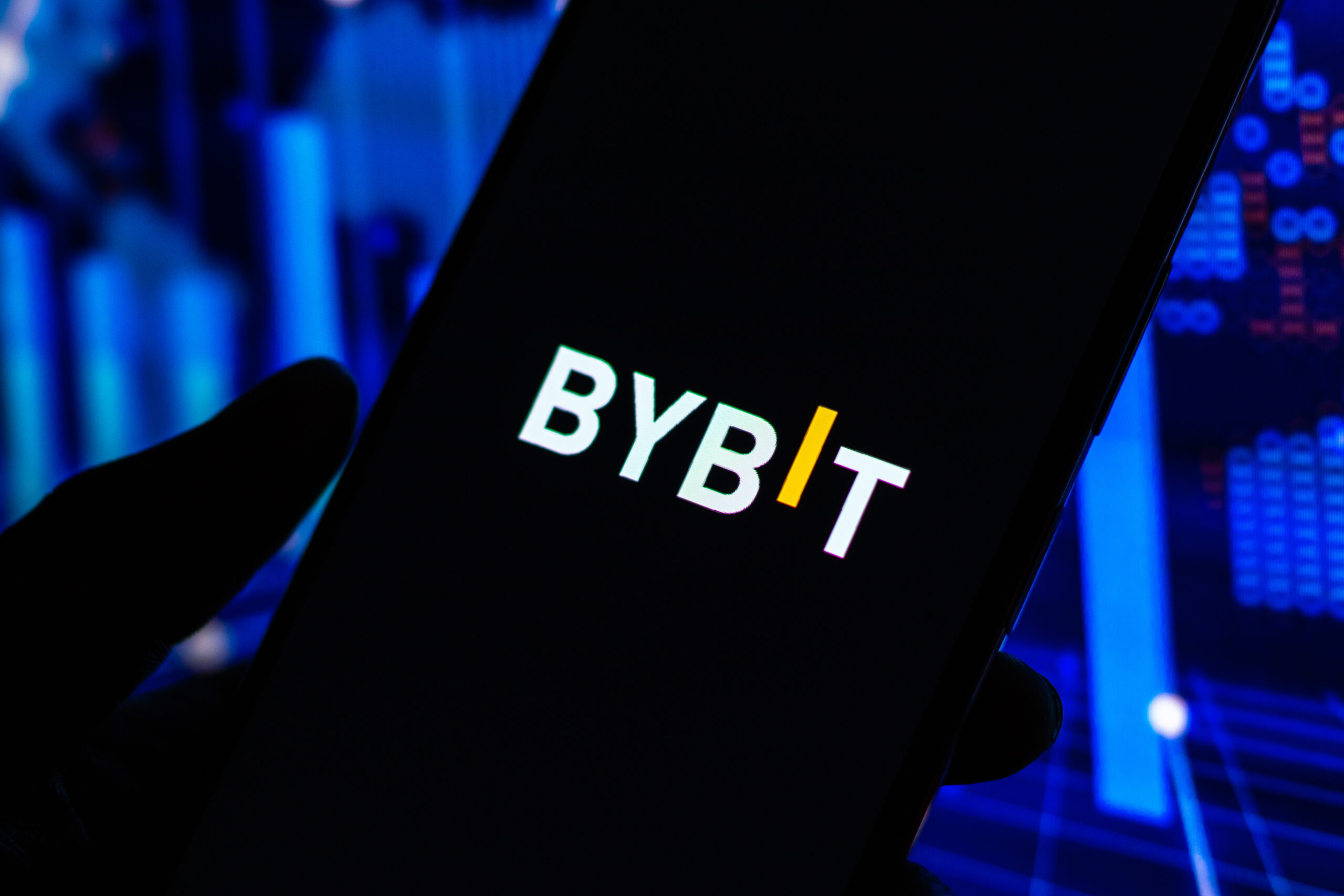On February 21, 2025, Bybit, the world’s second-largest crypto exchange, suffered a $1.4 billion Ethereum theft by North Korea’s Lazarus Group. This unprecedented heist breached Bybit’s cold wallet, raising concerns about the security of trusted crypto platforms. The incident highlights the ongoing risks in the cryptocurrency world, serving as a stark reminder for investors and traders. As digital assets grow, this event underscores the need for enhanced security measures and vigilance. The breach challenges the perception of invulnerability in crypto storage, urging the industry to address vulnerabilities. This theft marks a critical moment for reevaluating security practices in the evolving crypto landscape.
The Unprecedented Bybit Crypto Heist: Lazarus Group $1.4 Billion Theft

The cryptocurrency world was rocked on February 21, 2025, when Bybit, the second-largest crypto exchange globally, fell victim to a staggering $1.4 billion theft. This audacious heist targeted one of Bybit’s cold wallets, typically considered a fortress of digital asset security. The scale of this breach sent shockwaves through the crypto community, raising alarm bells about the vulnerability of even the most trusted platforms.
A Cold Wallet Compromise
Cold wallets, known for their offline storage and enhanced security measures, were once thought to be impenetrable. However, this incident has shattered that perception, forcing exchanges and investors alike to reassess their security protocols. The attackers managed to siphon off approximately $1.4 billion worth of Ethereum, highlighting the sophisticated nature of the cyber threat landscape.
Tracing the Digital Footprints Back to North Korea’s Lazarus Group
After the heist, blockchain investigators quickly responded. Independent sleuth ZachXBT traced the stolen funds to North Korea’s Lazarus Group. This state-backed hacking organization is known for high-profile cybercrimes, highlighting the geopolitical risks in cryptocurrency security. Their involvement underscores the growing complexity of safeguarding digital assets. This incident emphasizes the need for stronger defenses against state-sponsored threats. The crypto industry must adapt to these evolving challenges to ensure trust and security.
Uncovering the Culprit: North Korea’s Notorious Lazarus Group
The Digital Fingerprints
When investigating the massive $1.4 billion Bybit crypto heist, cybersecurity experts quickly identified telltale signs of the Lazarus Group’s involvement. This North Korean state-sponsored hacking organization has left a trail of digital breadcrumbs across numerous high-profile attacks. Their sophisticated techniques and unique malware signatures have become all too familiar to those in the cybersecurity world.
A History of Cyber Warfare from North Korea’s Lazarus Group
The Lazarus Group’s notoriety stems from a long list of audacious cybercrimes. From the 2014 Sony Pictures hack to the 2016 Bangladesh Bank heist, this group has consistently pushed the boundaries of cybercrime. Their focus on cryptocurrency exchanges in recent years demonstrates an evolution in tactics, leveraging the anonymity and liquidity of digital assets.
Connecting the Dots
Blockchain investigator ZachXBT linked the Bybit attack to the Lazarus Group by tracing stolen funds and identifying overlapping wallet addresses. This revealed connections to a recent Phemex exchange breach, highlighting the group’s coordinated attack strategy. Such patterns are typical of the Lazarus Group, showcasing their systematic approach to maximizing illicit gains. These findings underscore the group’s sophistication and the growing threat of state-sponsored cybercrime in the crypto space. The investigation emphasizes the need for enhanced security and collaboration to combat such threats effectively.
Tracing the Stolen Funds: Connecting the Dots to Phemex Exchange
In the wake of the massive Bybit heist, blockchain investigators have uncovered a startling connection to another recent cryptocurrency theft. ZachXBT, a renowned independent blockchain sleuth, has meticulously traced the stolen funds, revealing a complex web of transactions that links the Bybit incident to a breach at the Phemex exchange just one day prior.
The Trail of Digital Breadcrumbs Leading to Lazarus Group
ZachXBT’s analysis exposed a crucial piece of evidence: overlapping wallet addresses where funds from both the Bybit and Phemex hacks converged. This digital trail suggests a coordinated effort by a single entity, pointing strongly to the involvement of North Korea’s infamous Lazarus Group.
A Pattern of Sophistication
The connection between these two high-profile breaches demonstrates the Lazarus Group’s growing sophistication in targeting cryptocurrency exchanges. By linking multiple attacks, the hackers aim to obfuscate the movement of stolen assets, making recovery efforts increasingly challenging for law enforcement and cybersecurity experts.
Implications for the Crypto Industry
This revelation underscores the urgent need for enhanced security measures across the cryptocurrency ecosystem. As hackers become more adept at exploiting vulnerabilities, exchanges must invest heavily in robust security infrastructure to safeguard their clients’ assets and maintain trust in the rapidly evolving digital currency landscape.
Bybit’s Response: Ensuring Solvency and Enhancing Security
In the wake of the devastating $1.4 billion Ethereum heist, Bybit’s leadership has taken swift action to address customer concerns and bolster the exchange’s security infrastructure. CEO Ben Zhou has been at the forefront of these efforts, reassuring users and implementing robust measures to prevent future incidents.
Maintaining Financial Stability
Despite the substantial loss, Zhou has emphatically stated that Bybit remains solvent. The exchange’s commitment to backing all client assets on a one-to-one basis ensures that user funds are secure. This prudent financial management has allowed Bybit to weather the storm and continue operations without compromising its customers’ holdings.
Collaborative Investigation and Asset Recovery
Bybit has wasted no time in launching a comprehensive investigation into the breach. The exchange is working closely with cybersecurity experts and law enforcement agencies to trace the stolen funds and explore potential recovery options. This collaborative approach leverages the expertise of blockchain analysts and forensic specialists to unravel the complex trail left by the Lazarus Group.
Fortifying Security Protocols
In response to this unprecedented attack, Bybit is undertaking a thorough overhaul of its security infrastructure. The exchange is implementing advanced encryption techniques, enhancing its cold wallet management systems, and introducing additional layers of authentication for high-value transactions. These proactive measures aim to fortify Bybit’s defenses against future cyber threats and restore user confidence in the platform’s ability to safeguard digital assets.
The Ongoing Battle Against Cryptocurrency Heists: Lessons Learned
The Bybit hack serves as a stark reminder of the persistent threats facing the cryptocurrency industry. As digital assets continue to gain mainstream adoption, they’ve become increasingly attractive targets for cybercriminals. This incident highlights several crucial lessons for both exchanges and individual investors.
Evolving Security Measures
Cryptocurrency exchanges must continually evolve their security protocols to stay ahead of sophisticated attackers. Even cold wallets, once considered impenetrable, are now vulnerable to determined hackers. Exchanges should implement multi-layered security systems, including advanced encryption, multi-signature authorizations, and regular security audits.
Importance of Transparency
Bybit’s swift response and open communication with its customers demonstrate the critical role of transparency in maintaining trust. In the aftermath of a breach, exchanges must prioritize clear, timely updates to reassure users and prevent panic-induced market fluctuations.
Regulatory Implications
This high-profile heist may accelerate calls for stricter cryptocurrency regulations. While increased oversight could enhance security, it may also impact the decentralized nature of cryptocurrencies. Striking a balance between security and innovation will be crucial for the industry’s future.
User Vigilance
For individual investors, this incident underscores the importance of personal security measures. Utilizing hardware wallets, enabling two-factor authentication, and diversifying holdings across multiple platforms can help mitigate risks. Remember, in the world of cryptocurrency, you are your own bank – and your own security guard.
Bringing It All Together
As you consider the implications of this historic cryptocurrency heist, it’s crucial to recognize the evolving landscape of cyber threats. The Lazarus Group’s alleged involvement underscores the sophistication of state-sponsored hacking and the vulnerabilities even well-established exchanges face. This incident serves as a stark reminder of the importance of robust cybersecurity measures in the digital asset space. Moving forward, it will be essential for cryptocurrency platforms to continually adapt their security protocols and for users to remain vigilant. The collaborative efforts between Bybit, law enforcement, and cybersecurity experts in addressing this breach may set new standards for incident response in the crypto industry.
More Stories
Qwen3: Alibaba’s Open-Source AI Pushes the Boundaries of Hybrid Reasoning
Alibaba’s open-source model, Qwen3, marks major progress in hybrid reasoning. This new model blends traditional AI with dynamic reasoning, creating a flexible and efficient tool for developers globally.
Pony.ai Accelerates Toward Profitability with Strategic Fleet Expansion and Cost Optimization
Pony.ai is making strategic moves to accelerate its path toward profitability. As you navigate the complexities of this cutting-edge industry, it is crucial to understand how this Chinese company positions itself for success.
Alibaba’s $53 Billion AI and Cloud Investment: A Strategic Leap into the Future
As technology rapidly evolves, Alibaba’s $53 billion investment in AI and cloud computing deserves your full attention. This strategic move puts the Chinese e-commerce giant at the leading edge of a technological revolution.
PAL e-Wallet: Philippine Airlines’ Digital Leap into Seamless Travel Payments
Philippine Airlines (PAL) has taken a significant step forward with the launch of its PAL e-Wallet. This innovative digital platform represents a leap into the future of seamless travel payments, designed to enhance your journey from booking to boarding.
Avatars Ascend: YouTube’s Virtual Influencers Redefine Digital Fame
In the ever-evolving landscape of digital media, a new phenomenon is reshaping the concept of online celebrity. Virtual influencers, AI-generated or digitally animated personas, are rapidly ascending the ranks of YouTube stardom.
CrowdStrike Elevates Cloud Defense with Real-Time AWS IAM Identity Center Threat Detection
As you navigate the complex landscape of cloud security, staying ahead of evolving threats is paramount. CrowdStrike’s latest enhancement to its Falcon Cloud Security platform introduces real-time threat detection for AWS IAM Identity Center, elevating your defense capabilities to new heights.


